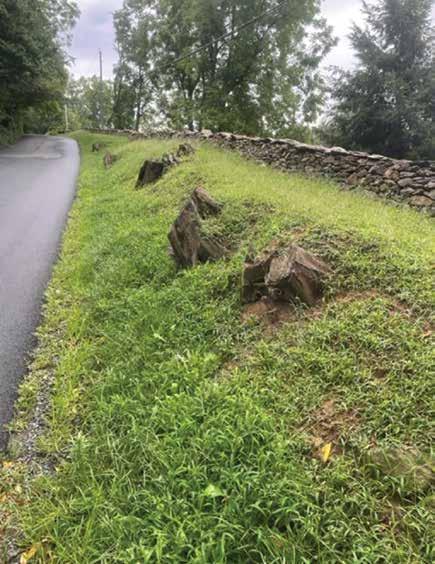
3 minute read
A Plea for The Trees
A Plea for The Trees
By Alfred Pollard
The devastating wind and rain events of June, 2022 and August, 2023 brought down dozens of trees in the Middleburg area. More recently, the reverse has occurred— a four-week drought with equally damaging effects. Driving around many historic country roads and in visiting neighboring communities in Loudoun, an increasingly diminishing resource— trees— is quite evident.

While not an arborist or versed in various species of trees, I’m also not familiar with responsibilities of governments versus landowners or very much aware of the costs and life cycles of various types of newly planted trees. But I can speak to my impressions that the communities in and around Middleburg as well as Loudoun County have suffered significant harm through the loss of far too many trees, especially those with rich leaf cover.
Visitors and residents driving, riding or walking through the town of Middleburg and nearby localities clearly relish the shade trees that create, at points, an almost cathedral-like atmosphere. But those points are rapidly diminishing.
Environmental concerns, debates on climate warming and appropriate remediation and arguments about replacement costs of trees abound. But no one can fail to note the relevance of a healthy tree cover to the scenic beauty, cooling effects and support for water retention in a time of hotter and drier periods.
Fields for horses or for growing hay or agricultural products are key to Middleburg’s attraction and economy. But many fields now have open spaces at their borders or fence lines where a range of tree species once thrived. Further, visitors who arrive on foot, bicycles or automobiles provide comments on the diminishing tree cover. For locals, the needed removal of dead or downed trees calls attention to the problem.
At the same time, Middleburg has familiarity with conservation easements, great work by VDOT to address storm damage on roadways, more and more downed trees and efforts at re-planting programs in various locales in the county.
However, the time has arrived for a more comprehensive and cooperative discussion of coordinated efforts to address the decline of trees near scenic neighborhoods and highways and even forest settings.
Recent discussions regarding data centers and potential programs that have had input from all constituent groups provide a model that may be considered for the challenges presented by a decline in local tree cover.
Many programs already exist. How to bring them together, to share information and to undertake action remains to be done and makes clear the value of looking to assistance at federal, state and local levels, including local arborists with relevant expertise.
Plantings to replace the 120- to 200-year-old stock will take an act of confidence and courage, if only because none of us will see them come to their full beauty. What mixture of trees should be included in tree replacement and replenishment schemes should be addressed alongside the most clear geographic locations for such activities.
Clearly, it’s time to take appropriate, reasonable steps to “re-stock” this valuable resource, with its many benefits, to our community and to our county.
Alfred Pollard is a member of the Middleburg Sustainability Committee









